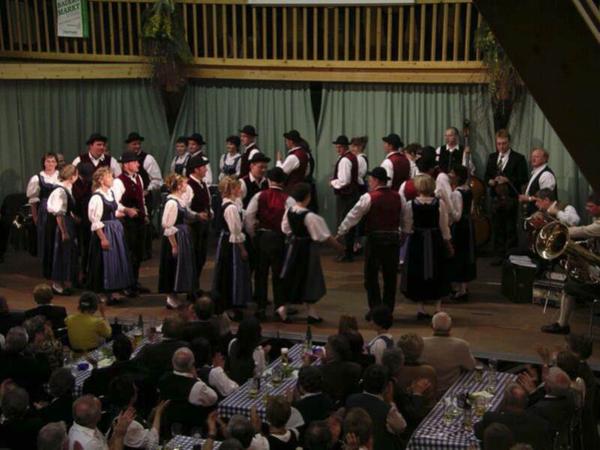Innviertel "Landler"
Performing arts in Upper Austria, inscribed 2013
The history of Upper Austria’s Innviertel "Landler" dance is inextricably linked to the Innviertel "Zechen". These were originally rural fellowships of boys that displayed particular artistry in the "Zechentanz"—a combination of dance (the "Eicht"), music, poetry, and song. The melody, the special yodel ("Almer") at the end, and the “distorted” rhythm in ¾ time make the Innviertel "Landler" a special musical form within the Austrian "Ländler" family.
It is assumed that around 1850, these fellowships began creating their own Landler from commonly known dance figures by altering the original dance figures and dancing them together in a certain sequence. Each group had its own Landler, which was passed down from one generation to the next while at the same time being constantly refined. Although through this process, countless forms of the Innviertel Landler in song and dance evolved over the years, because of their common origin, they can still all be danced to the same music.
Beginning in the 1950s, the structural changes in farming, the individualisation of leisure-time activities, and increased mobility led to the demise of many of these fellowships. Today, the Innviertel Landler is danced by about 25–30 Zechen, folk-dance groups, and traditional-costume associations. The Zechen, in particular, as well as the folk-dance groups of the region, see their primary mission in preserving the characteristic Landler dance of their respective area. Each year in the Innviertel, several gatherings are held at which about 10–15 Zechen and folk-dance groups perform their Landler and other folk dances. Fairs and weddings (particularly those of group members) were and occasionally still are important events with regard to the Innviertel Landler.
Contact
Downloads
- Application form (in German only) 975 KB (pdf)
- Expertise Deutsch (in German only) 827 KB (pdf)
- Experise Derschmidt (in German only) 175 KB (pdf)


![[Translate to EN:] © J. Ségur/ZED, with the permission of UNESCO](/fileadmin/_processed_/d/b/csm_Convention-2003-IKE_0832a6a47d.jpg)
![[Translate to EN:] © ÖUK](/fileadmin/_processed_/3/9/csm_P1011318_7eac86402f.jpg)

![[Translate to EN:] © Weitblickfilm](/fileadmin/_processed_/9/8/csm_Workshop_17_2dee1e1fd8.jpg)